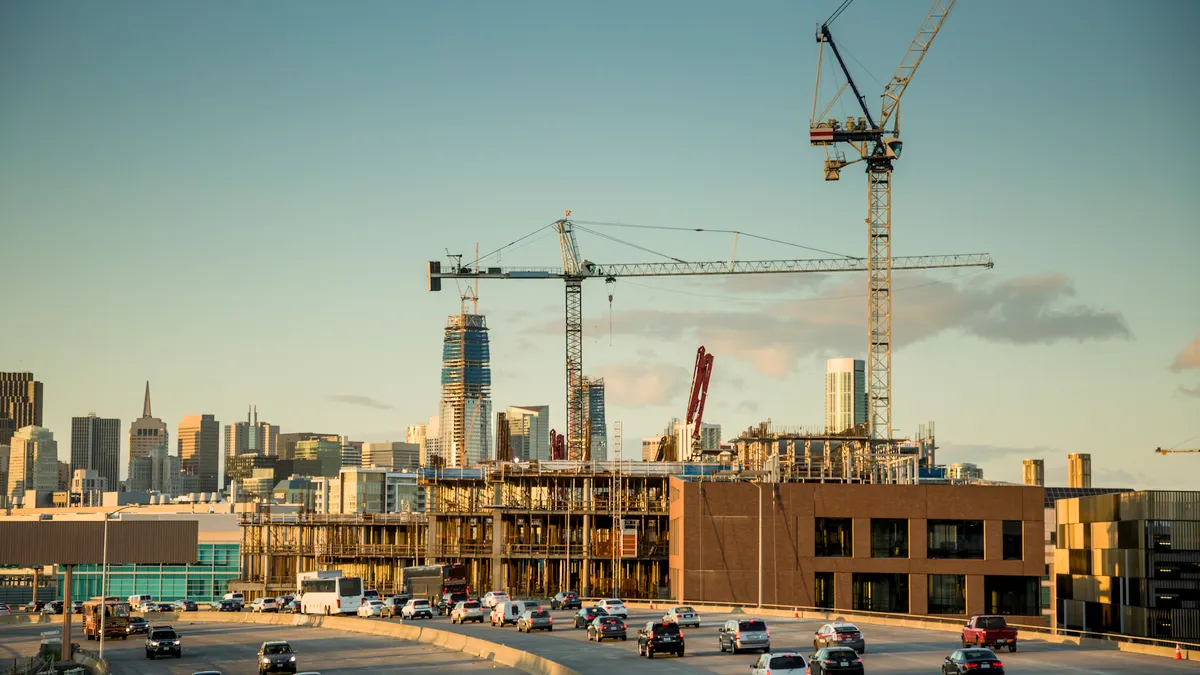Dive Brief:
- A new study from the Insurance Institute for Highway Safety (IIHS) found a majority of e-scooter injuries happen on the sidewalk, highlighting continued concerns about where the vehicles are ridden in cities.
- IIHS studied nearly 500 scooter and bike riders to find that scooter riders suffered injuries more frequently per mile than bicyclists due to potholes or cracks in the pavement, or from hitting infrastructure like signposts or curbs. Nearly three in five scooter riders were injured on the sidewalk, IIHS found, while one in five riders were injured in a bike lane, trail or off-road location. IIHS also found bicyclists are three times more likely to be struck by a car than scooter riders.
- Of those injured on a scooter, IIHS said nearly 40% were hurt on their first ride. Only a quarter of riders were using the e-scooters for a commute to work, while the vast majority were running errands or riding for fun. Only 2% of injured scooter riders reported wearing a helmet.
Dive Insight:
Assessing the benefits of e-scooters versus other modes of transportation has become a common practice as cities wrestle with how scooters can be integrated into a multimodal network, and how infrastructure can keep up.
Some cities including Denver and San Antonio have outright banned e-scooters on their sidewalks, while others have introduced rules where scooters can be used on the sidewalk if no bike lane is available. Micromobility companies Lime and Bird also say they ban sidewalk riding and have introduced technology to warn riders. Meanwhile a number of companies, including Superpedestrian's e-scooter service LINK, tout geofencing technology to stop scooters operating if scooters are used on a sidewalk.
Jessica Cicchino, IIHS' vice president of research and the lead author on the study, said it remains to be seen where the safest places are for scooter riding, as no solution is perfect.
"You might have a trade-off where you have more serious injuries on the road," Cicchino said. "But if you're riding on sidewalks, you have more opportunities for having conflicts with pedestrians, and being on an uneven sidewalk might not be conducive to riding on a scooter and might make you fall off."
The National Association of City Transportation Officials (NACTO) said earlier this year that micromobility is "here to stay" despite setbacks from the coronavirus pandemic (COVID-19). Cicchino said it will be imperative for cities and micromobility companies to figure out how and where they can be ridden safely and at a reasonable speed, although there is not a one-size-fits-all solution for all jurisdictions given differing infrastructure conditions on the ground.
The IIHS research noted that while scooter riders generally prefer riding in bike lanes, city leaders are still struggling to work out how best to balance the competing needs of their road networks. As sidewalk bans have pushed scooter riders into bike lanes, cyclists have issued increasing complaints about scooters' lower speeds affecting the flow of traffic in those lanes.
"I think it might be a matter of thinking more about a transportation network, and how do we fit in different kinds of transportation that's going at different speeds," Cicchino said. "There may be places where the roadway needs to have vehicles that aren't going as fast so they can share the road with some of these kinds of more intermediate-speed vehicles."
A lack of rider experience could also be a contributing factor to injuries, Cicchino said, especially as there is often limited instructional material provided before a scooter ride begins. Some companies are trying to increase their educational material, however. After several high-profile safety incidents and deaths in New York City, for instance, shared moped service Revel returned from suspension with beefed-up safety features in a bid to prevent accidents.
Cicchino said it will require a broad effort on the part of cities and e-scooter operators to emphasize safety, not only through the wearing of helmets but also ensuring infrastructure is properly maintained. While some scooter companies have called for bike lane expansions and improvements to enhance safety, Cicchino said it may not be that simple.
"It does seem like there's more to it than that [adding bike lanes]," Cicchino said. "One thing we saw was a lot of the things scooter riders are being injured by are things like poorly maintained pavement or surface features, or falling over the curb. That might point to, if we're going to have more of these kinds of mobility that might be harder to balance on, maybe maintenance of the roadway or maintenance of the sidewalk becomes more of an issue."
Representatives of the Governors Highway Safety Administration (GHSA) said the IIHS research shows there is a growing understanding of dockless bikes and scooters at all levels of government. GHSA released its own micromobility study earlier this year, calling for state legislatures to play a leading role in regulating the devices and placing more emphasis on safety.
"The good news is that we are beginning to understand the challenges posed by the growth in these devices, so that states and cities across the U.S., in partnership with micromobility providers, can take appropriate action to protect these vulnerable road users," said Pam Shadel Fischer, GHSA's senior director of external engagement, in a statement.












